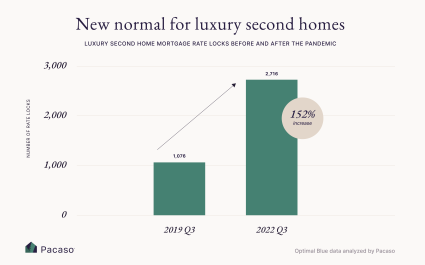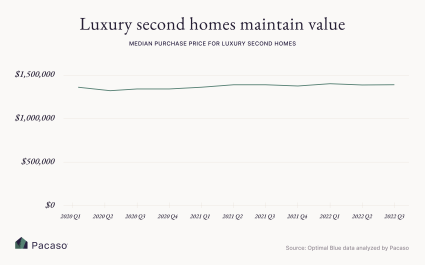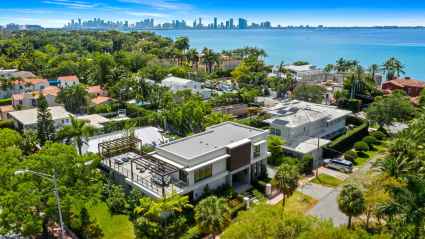Pacaso Second Home Market Analysis Q3 2022: Key takeaways
- Luxury second home mortgage rate locks declined 28% from Q2 to Q3 in 2022, however they remain 152% above their pre-pandemic level in Q3 2019.
- While many pandemic boomtowns began to see price declines in Q3, those still have not extended to luxury second homes in destination communities.
- The data suggest buyers are adjusting their second home purchases to account for deteriorating market conditions by opting for less expensive destinations closer to home.
- The unprecedented ten-fold increase towards remote work since the pandemic is an historic development that will continue to fuel second home demand for many years to come.
The pandemic’s effect on luxury second homes
Luxury second home rate locks were 152% higher in Q3 2022 than they were in Q3 2019, the last reading for the same season before the pandemic. In fact, every quarter from Q3 2020 to Q3 2022 saw rate locks on luxury second homes clock in at more than double the level in the corresponding quarter of 2019.
Impact of market conditions
Mortgage rate hikes, a weak stock market and general economic concerns, particularly regarding the housing market, combined to deter many buyers from purchasing a luxury second home in Q3. The relationship between mortgage rate hikes and second home rate locks is stark.
Premier destination communities trending down
| Premier Destination Community | YoY Rate Mortgage Lock Change |
| Park City, Utah | -44.9% |
| Truckee-Grass Valley, California | -47.8% |
| Santa Barbara County, California | -56.7% |
| Breckenridge, Colorado | -62.5% |
| Honolulu County, Hawaii | -66.7% |
Regional destination communities trending up
| Regional Destination Community | YoY Rate Mortgage Lock Change |
| Washington County, Utah | +450.0% |
| Belknap County, New Hampshire | +183.3% |
| Currituck County, North Carolina | +160.0% |
| Osceola County, Florida | +116.7% |
| St. Johns County, Florida | +100.0% |
Resilience in purchase price and appreciations
Despite the decline in rate locks, luxury second homes maintained their value in Q3. Prices have held up due to low inventory, as sellers who are also seeking to buy want to avoid trading a low mortgage rate for a high one, and as demand remains well above pre-pandemic levels. Some parts of the housing market began to see price declines in Q3, particularly the middle and lower tiers in pandemic boomtowns. While that may extend to luxury second homes in destination communities down the line, second home prices in those communities did not lose ground in Q3.



